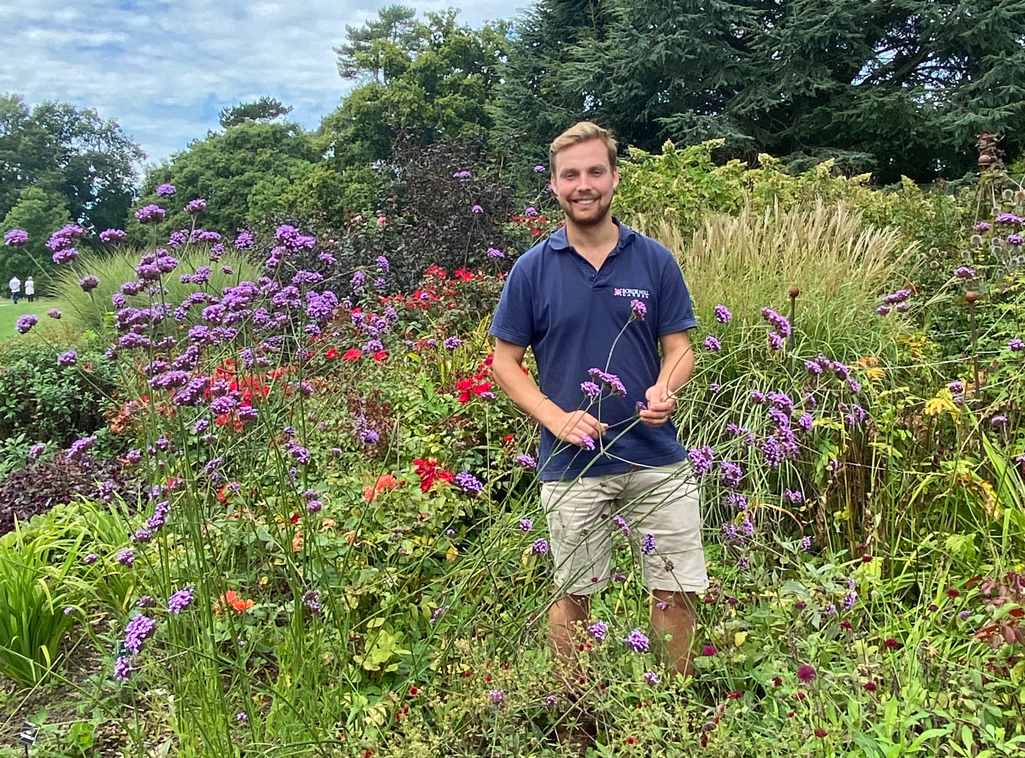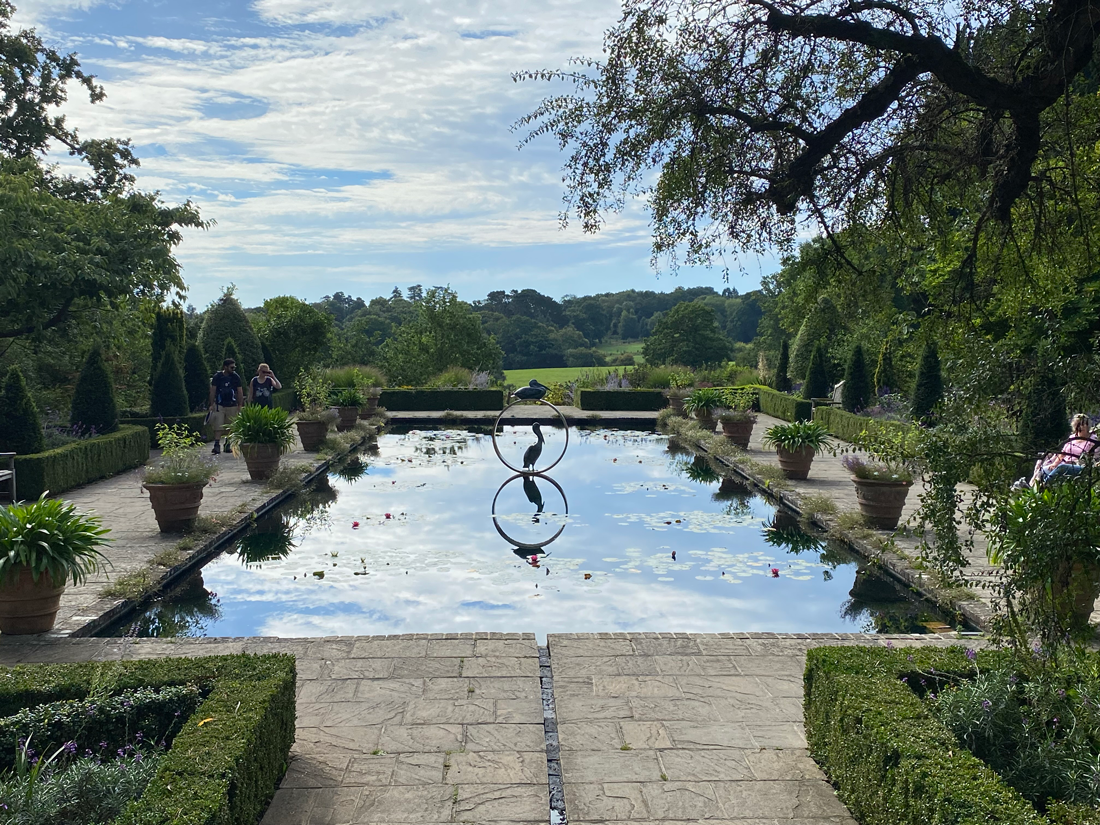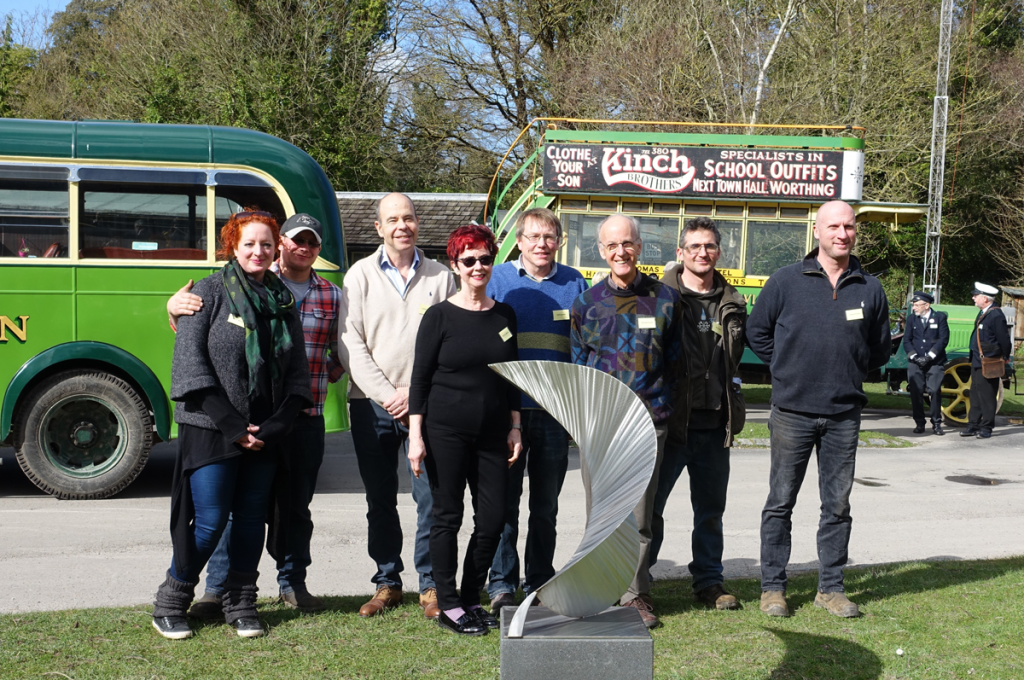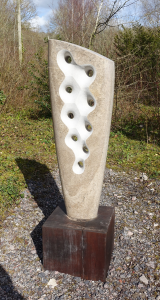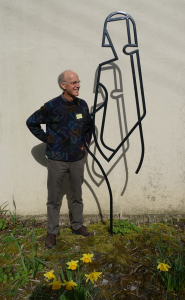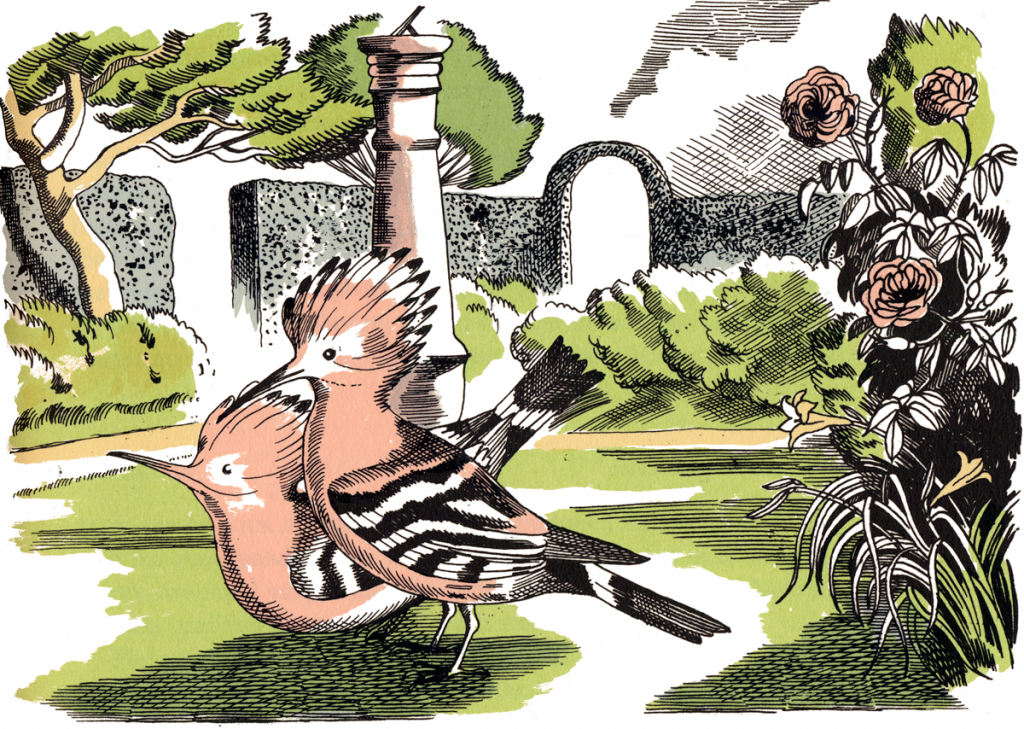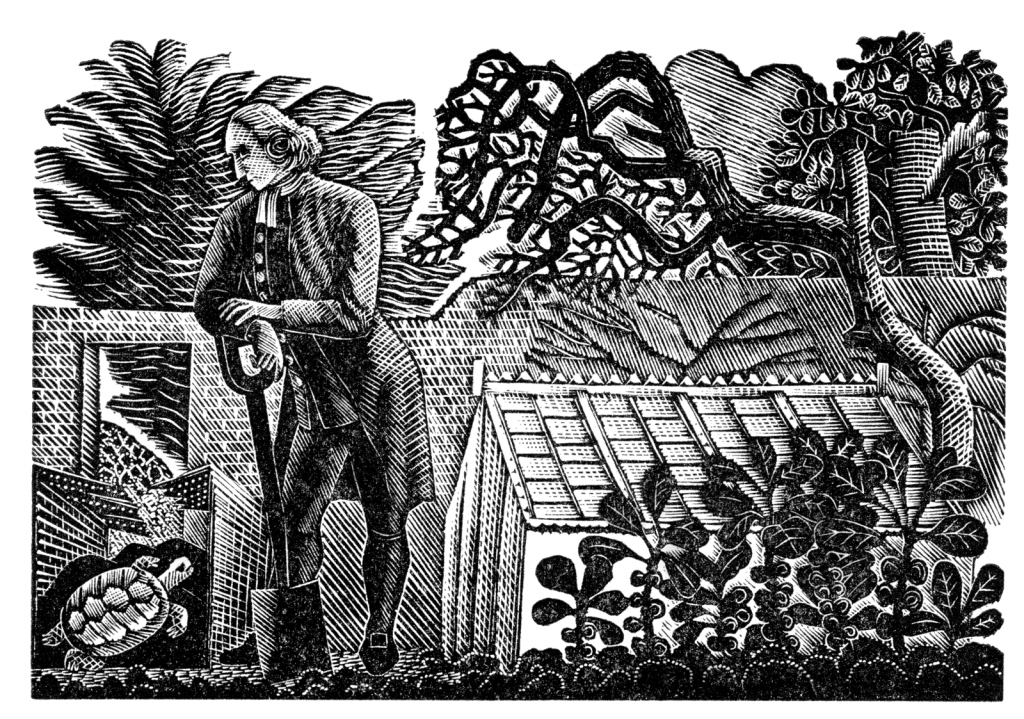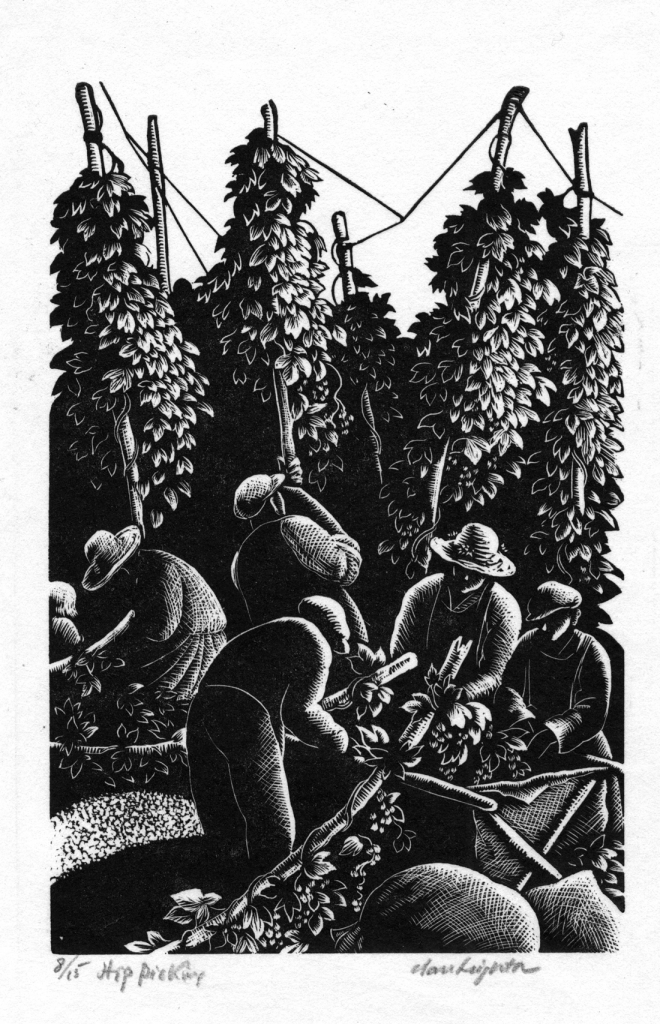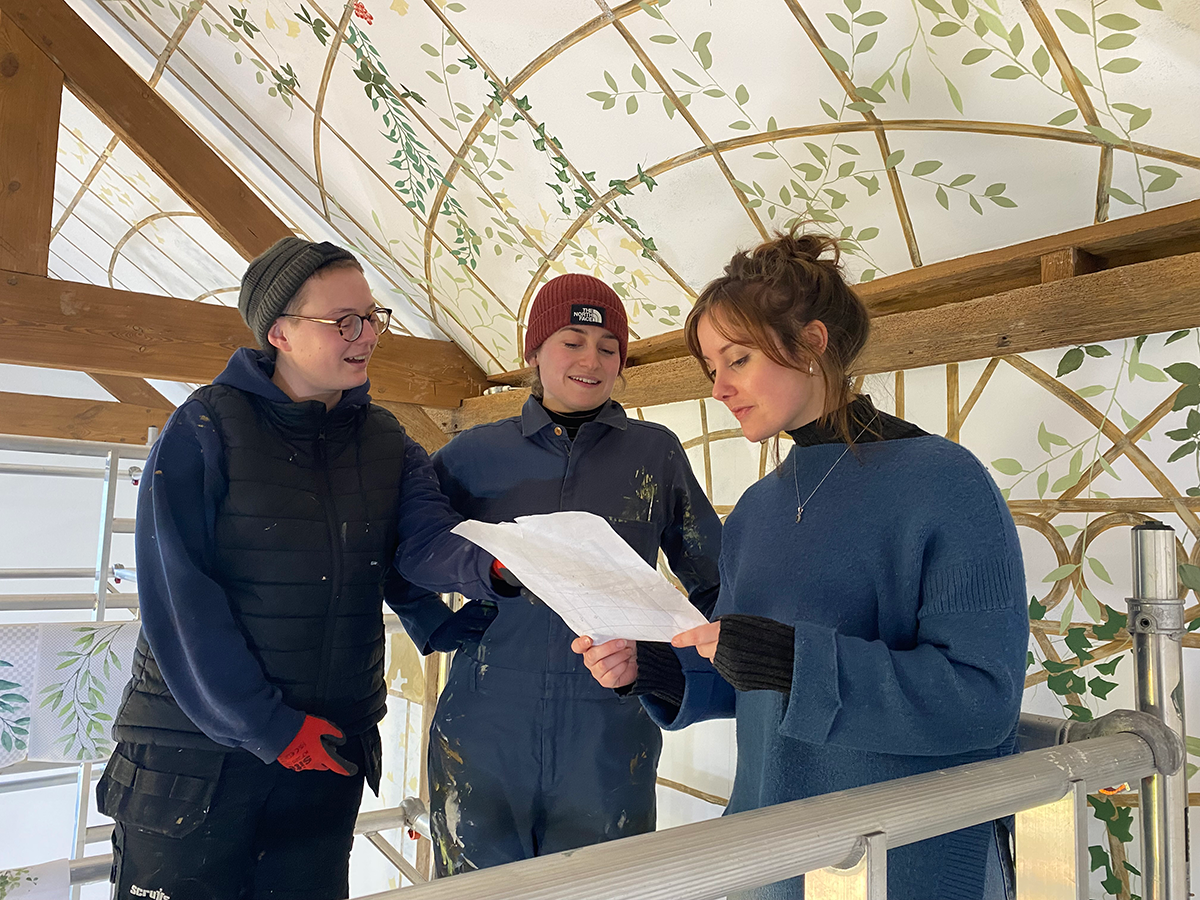
It is always a joy to return to Parham with its beautiful house and gardens.
When I was last here there was great excitement about a series of murals being painted in what was called the “old cow byre” in old Parham plans. This is now a lovely space for visitors to sit in and enjoy tea and cake. The design of these new murals draws inspiration from the famous theatrical set and costume designer Oliver Messel’s ceiling in the Long Gallery, commissioned by the Pearsons in the 1960s. The pre- and post-war years witnessed a renaissance in mural and wall painting, and the Long Gallery ceiling is an eloquent example of the genre.
The joyous new murals at Parham have been designed by the young set and costume designer, Elin Steele. James Barnard, who together with his family calls Parham home, was introduced to Elin through his work as a trustee of the Linbury Trust, the grant-making foundation started by Lord and Lady (John and Anya) Sainsbury. In 2019 Elin won the prestigious Linbury Prize, the only nationwide prize for stage design in the UK, created by Lady Sainsbury (herself a former ballerina) in 1987. Sir Nicholas Hytner (former Director of the National Theatre) said that the prize “has become indispensable to the British theatre and is invariably a source of undiluted optimism about the future of stage design”.
Elin works predominately in theatre and ballet, producing the designs and then collaborating with a team in the theatre to deliver them.
At Parham, Elin worked closely over many weeks with her friends, scenic artists Aleks Carlyon and Lizzie Calvert. The design was arrived at after much consultation on themes and details with the Barnards, then marked up and painstakingly painted freehand by Aleks and Lizzie, employing a mixed-method including watercolour overlaid with pencil and gouache.
The design in the room gives you the impression that you are sitting an orangery, as though the outside has been brought in. It’s engaging and fun, drawing inspiration from the Garden and the colours of Parham’s remarkable collection of textiles and needlework.
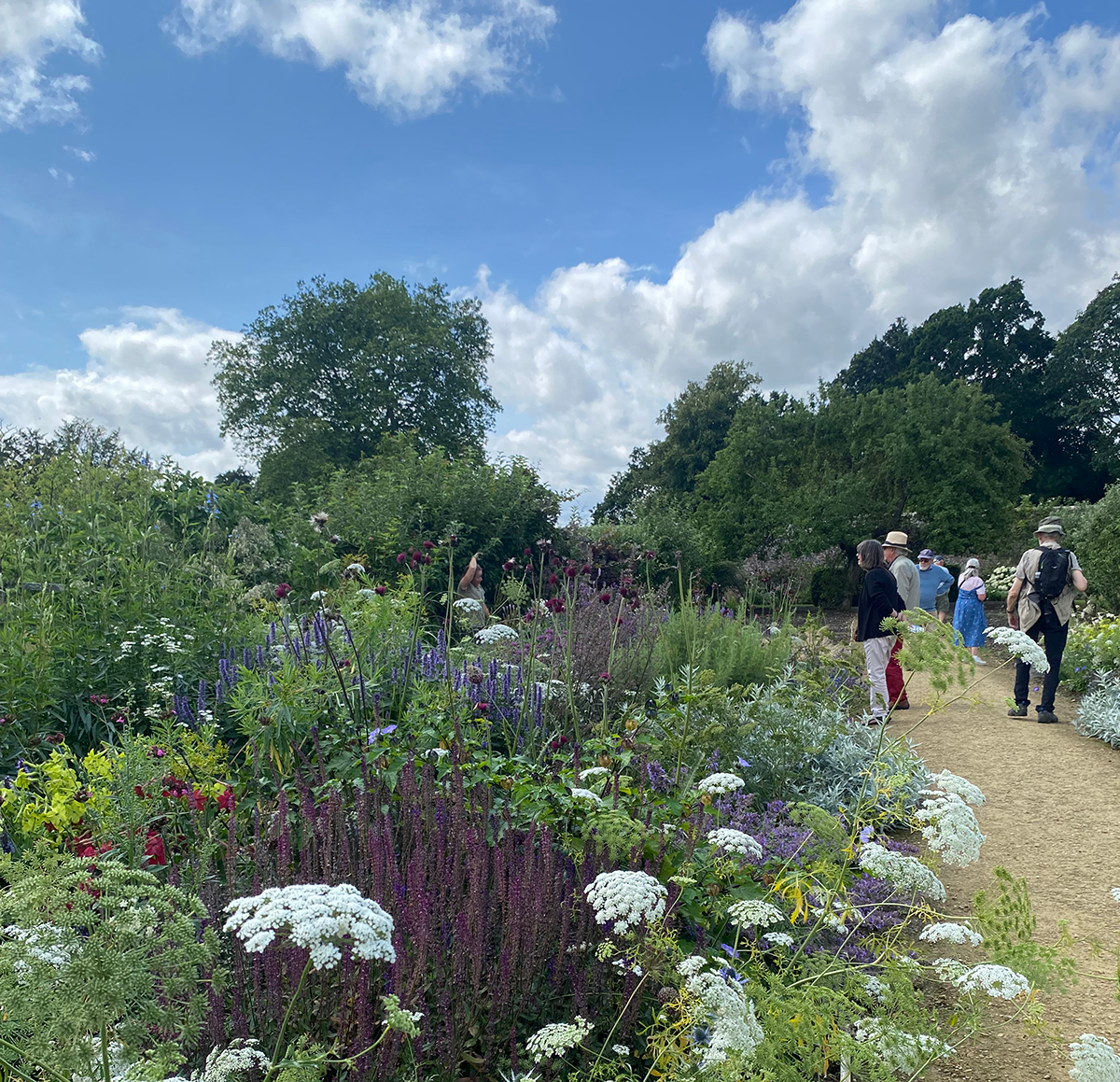
Outside in the Walled Garden, I visit the newly re-planted Blue Border with its Salvias, Nicotiana, Eryngium, Nepeta and Selinum playing in the breeze, their palette echoed in the summer sky with its flashes of blue and scudding clouds.
Whether you are visiting for the first time or returning, Parham never fails to captivate and delight anew. For more information go to www.parhaminsussex.co.uk.
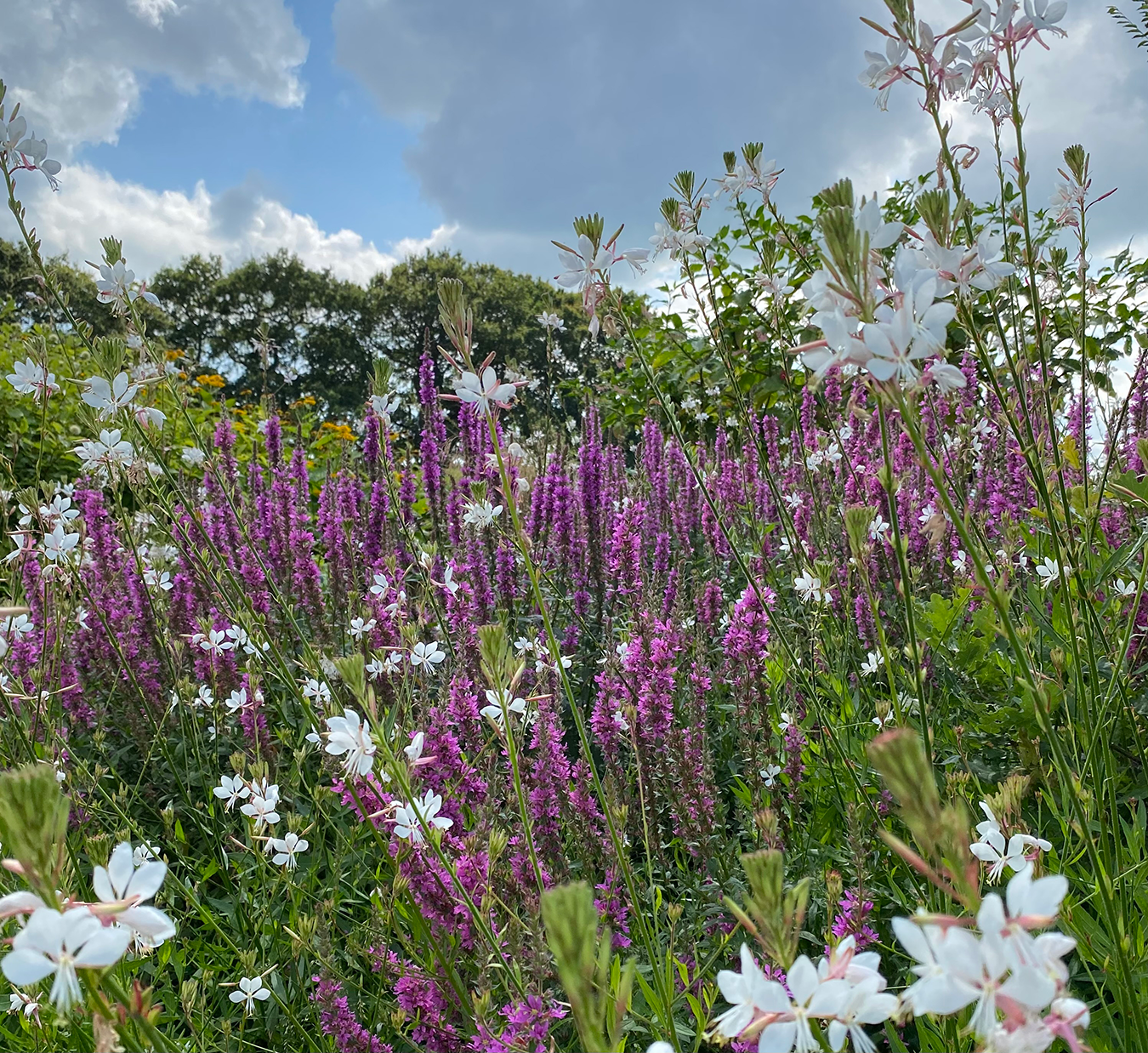 Along the path that leads you into the Sussex Prairie Garden you pass some happy pigs under the canopy of oaks and as you break into bright daylight your senses are immediately captured by the scale, colour, light, texture and movement expressed in the planting and design. It is really beautiful!
Along the path that leads you into the Sussex Prairie Garden you pass some happy pigs under the canopy of oaks and as you break into bright daylight your senses are immediately captured by the scale, colour, light, texture and movement expressed in the planting and design. It is really beautiful!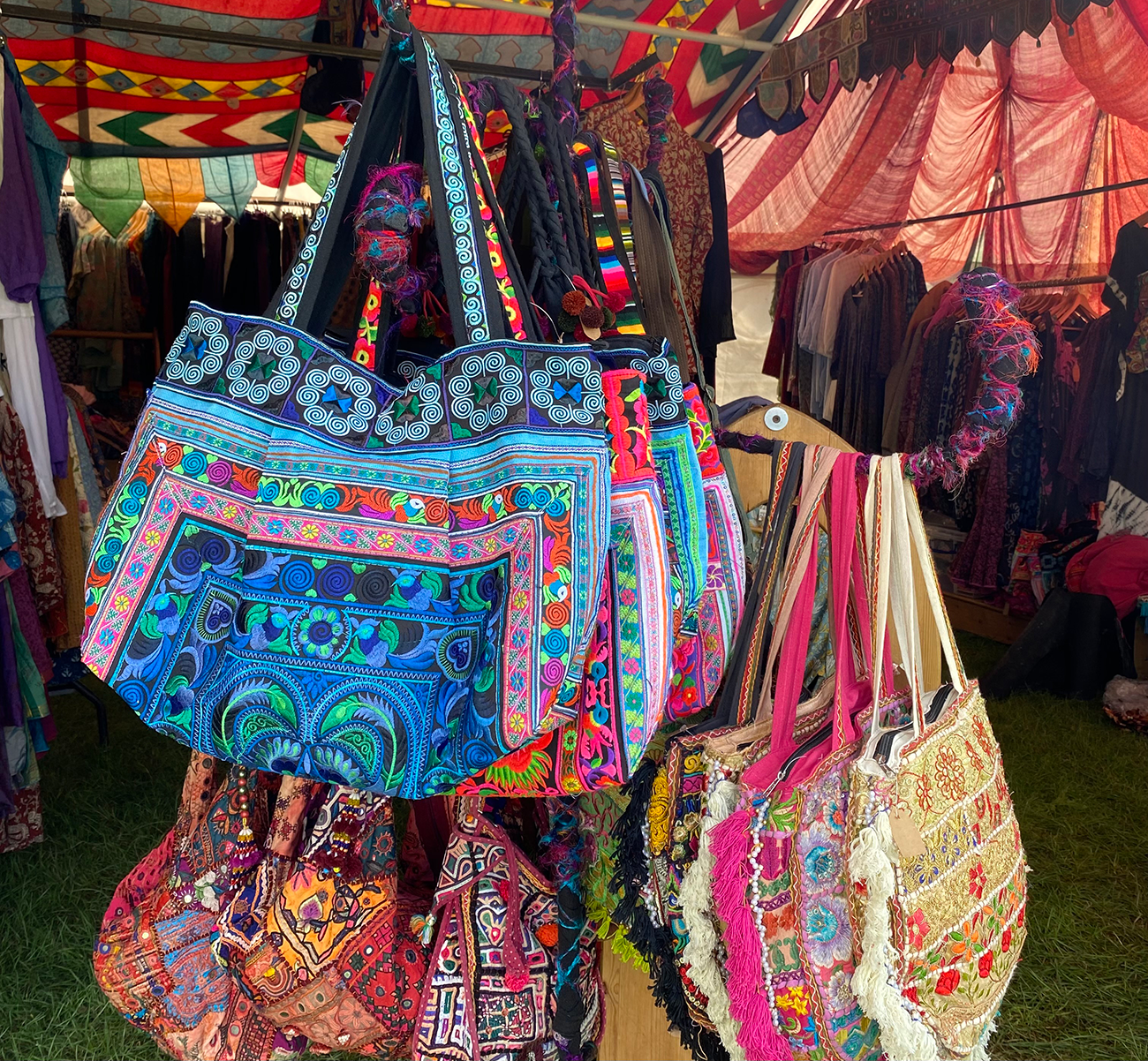 Preparations are underway for the annual Indian Summer Bazaar. Marquees are being filled abundantly with exotic clothes in cottons and vintage sari silk, semi-precious designer jewellery, scarves, home furnishings and gifts – all ethically traded from India and for sale. This bazaar is at the heart of a month long festival supported by food and talks. It runs from Friday 4th August until Saturday 2nd September.
Preparations are underway for the annual Indian Summer Bazaar. Marquees are being filled abundantly with exotic clothes in cottons and vintage sari silk, semi-precious designer jewellery, scarves, home furnishings and gifts – all ethically traded from India and for sale. This bazaar is at the heart of a month long festival supported by food and talks. It runs from Friday 4th August until Saturday 2nd September.